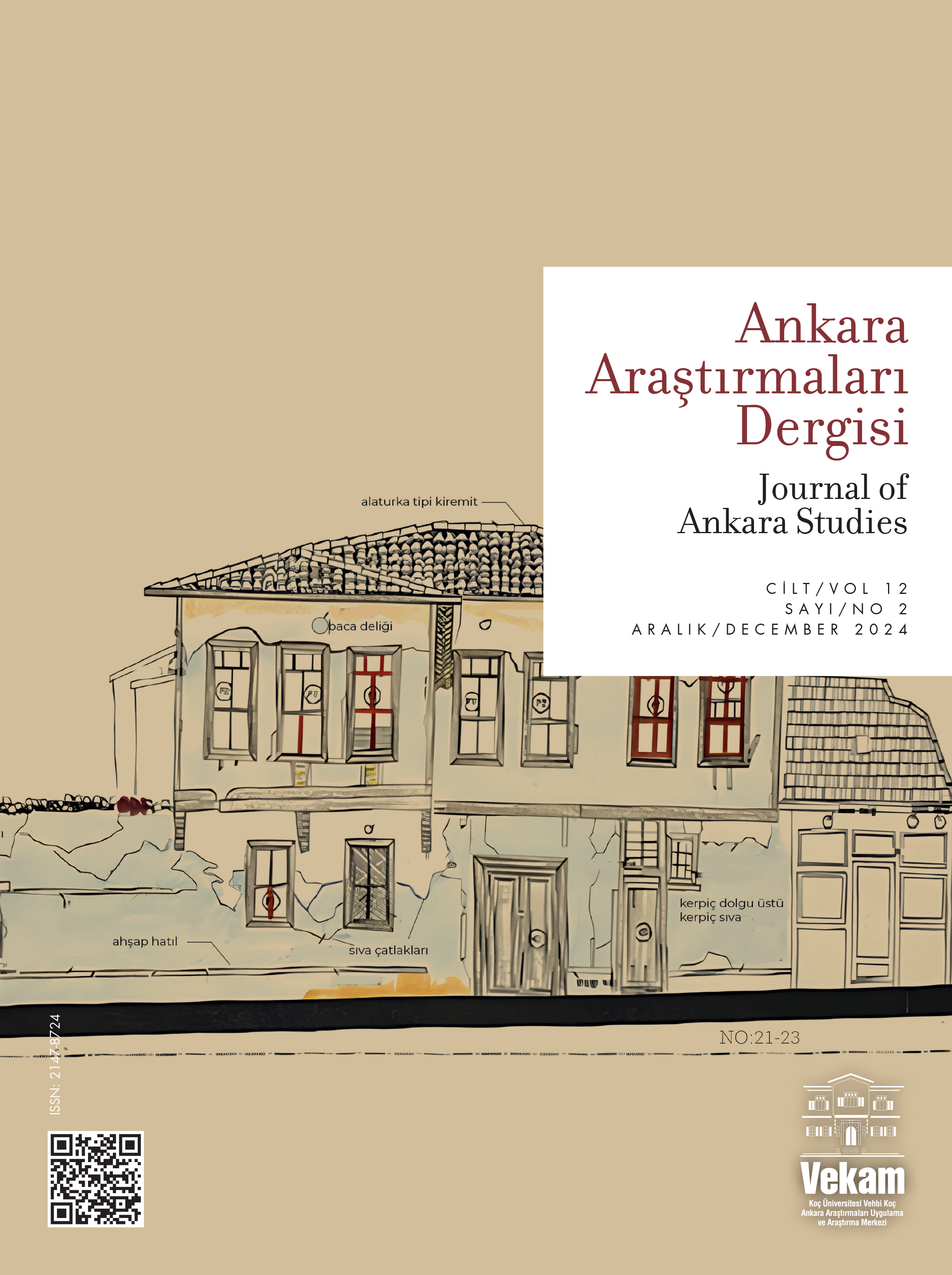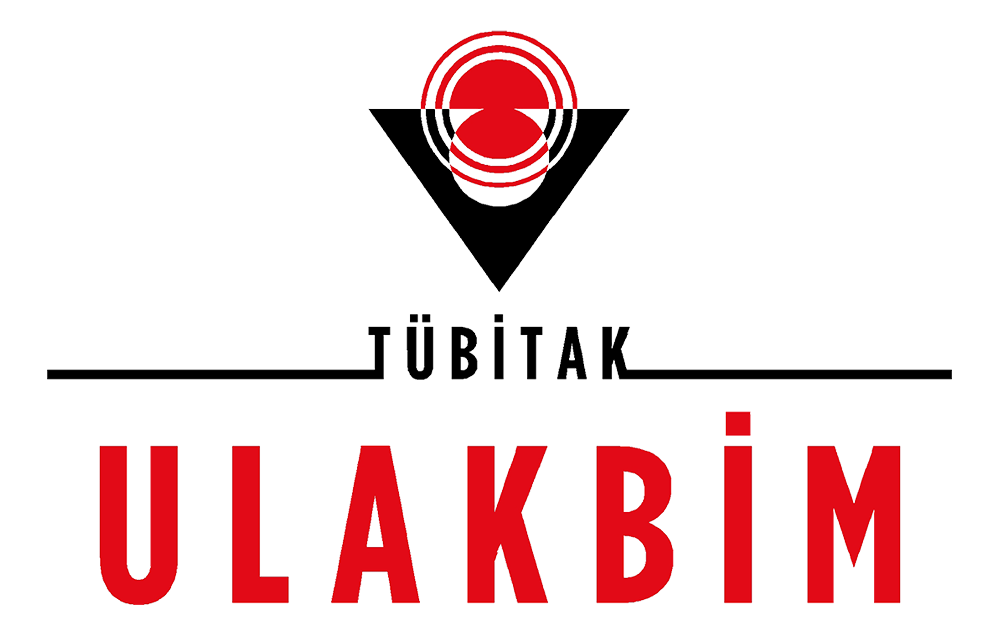Volume: 12 Issue: 2 - 2024
| 1. | From the Editor Mehtap Türkyılmaz, Alev Ayaokur Page I |
| RESEARCH ARTICLES | |
| 2. | An Evaluation of Urban Conservation and Rehabilitation Studies in Historical Areas in Terms of Resilience: The Hamamönü District of Ankara Rabia Çakıroğlu, Elif Mıhçıoğlu doi: 10.5505/jas.2024.46503 Pages 161 - 168 Modern cities and societies face numerous challenges which include energy, migration, pandemics, global and local economic crises, as well as ecological change. A fundamental approach developed to address these issues is the concept of resilience. This concept focuses, beyond notions of sustainability, on the holistic evaluation of a system and its subcomponents. In current urbanism approaches, resilience acts as an evaluation mechanism for multi-layered urban systems which considers physical, economic, demographic, ecological, and infrastructural factors holistically. This study uses the two most current and comprehensive international approaches, namely the conceptual and applied resilience mechanisms of RELi and CRI, to assess the existing social and economic resilience levels, in terms of the measures taken for conservation and rehabilitation, in the historic urban core of Hamamönü in Ankara, Türkiye. Significant and diverse changes have occurred in the region since the conservation and rehabilitation interventions in Hamamönü in 2009. In order to understand its capacity of resilience in this period by examining the economic, structural, historical, demographic, infrastructural, and administrative layers in the study area of Hamamönü, necessary data is collected through field analysis, structured interviews, and GIS measurements to understand the capacity of resilience in the study area. The collected data is evaluated using CRI and RELi 2.0 resilience criteria adapted to the field characteristics, and suggestions are developed. This article seeks to assess the socioeconomic resilience of conservation-oriented zoning plans and conservation-rehabilitation projects against unforeseen crises, determine the principles necessary to better protect similar historic areas, and develop a roadmap for the most effect form of sustainable preservation. |
| 3. | Post-Military Landscapes: Ankara’s “Nouvelle Nature” Mohammad Najdat Yawer, Funda Baş Bütüner doi: 10.5505/jas.2024.28863 Pages 185 - 203 Following the failed coup attempt in 2016, the implementation of a program to evacuate and relocate military sites outside urban centers has created unoccupied areas in many cities in Türkiye, which presents an urgent urban planning and design challenge. The capital city, Ankara, warrants particular study due to having a particularly large number of extensive military sites located within the city center. This article examines contemporary literature on urban unoccupancy to consider Ankara’s post-military landscapes beyond the conventional notions of “emptiness” or “nothingness”. The article, which analyzes the transformation of military sites in Ankara using maps and satellite images from different periods, explores the symbolic and historical significance of these sites, while primarily emphasizing their value within the urban landscape. The study, which aims to establish an alternative framework to conventional urban programs and human-centric approaches to urban redevelopment, proposes two, possibly pivotal, design principles in the utilization of post-military landscapes: (1) embracing natural processes and (2) establishing ecological connections. Within the framework of these principles, Ankara’s post-military sites are reinvented as valuable urban landscapes with the potential to form the city’s “nouvelle nature” by merging their former military identities with their emerging natural identities. |
| 4. | The Poli-Centeric Urbanization of Rural Areas in Ankara: An Evaluation of the Transfer of Real Estate Property Rights (2012-2023) Merve Altundal Öncü doi: 10.5505/jas.2024.38980 Pages 205 - 216 This study aims to evaluate how the polycentric urbanization process of Ankara has focused increasingly on rural areas. This movement from urban to rural areas of polycentric urbanization, which refers to the development and expansion of multiple centers in different regions of a city, is inevitable. This study examines the urbanization process of Ankara, how this process has evolved during different periods, and the effects of urbanization on rural areas, by evaluating the data related to the transfer of property ownership rights in Ankara. Within the scope of the research, property ownership transfer data from 2012 to 2023 in Ankara were spatially analyzed using ArcGIS software. Purchase and sale data for different periods demonstrated the increase in the density of rural areas and the subsequent development of new centers. Consideration of the process of urbanization, shaped by variables such as population growth, infrastructure needs, the reduction of agricultural lands, and migration, provides an opportunity to assess the future urbanization dynamics of Ankara. Furthermore, evaluation of the changes in property transactions enabled a projection to be made regarding how urban development in 2030 is likely to unfold. |
| 5. | The Positioning of Culture Between Proliferation and Consumption: Polyvalent Cultural Centers in Ankara Feyza Topçuoğlu doi: 10.5505/jas.2024.45822 Pages 217 - 242 Culture exhibits a complex relationship that exists within architecture and urban environments, particularly in how space is manifested through diverse settings. This study explores the intricate interplay between culture and architecture within the context of Ankara’s cultural centers. By examining the development of urban cultural spaces across six districts—Çankaya, Altındağ, Yenimahalle, Etimesgut, Keçiören, and Sincan— the study evaluates how these centers embody ideological influences and discourses in their contribution to the city’s socio-cultural landscape. The research adopts a critical view of cultural spatiality, analyzing cultural coherence and inconsistencies in how cultural centers address the needs of citizens and reflect ideological narratives within urban culture. The study employs both qualitative and quantitative methodologies within a comparative analysis that calculates cultural spatiality ratios and analyzes user feedback. This approach assesses the dynamics of cultural production, presentation, and consumption, revealing the disparities that exist in cultural representation and utilization. Findings highlight the polyvalent structure of cultural centers, emphasizing their role in navigating cultural representation, identity, and urban development. |
| 6. | The Interior of Kindergartens and the Spatial Satisfaction of Teachers: A Case Study of Hacettepe University Kindergarten Sera Gülnar, Gülçin Cankız Elibol doi: 10.5505/jas.2024.14238 Pages 243 - 256 This study evaluates the spatial characteristics of Hacettepe University Kindergarten, as well as the intended design decisions to make the kindergartens safer, healthier, and more comfortable for both children and teachers. The purpose of this study is to gauge the viewpoints of kindergarten teachers, identify actual workspace problems based on the results of the survey, and make suggestions by using Hacettepe University Kindergarten as a case study. This research has been planned as a qualitative study, though some findings are based on quantitative data. Data was collected in two different ways. The first phase involved observation while, in the second phase, the satisfaction of the teachers of Hacettepe University Kindergarten with the space provided was analyzed using the Place Satisfaction Scale as a data collection tool. The findings are presented in two parts. In the observation and space analysis, it was found that the kindergarten buildings studied were generally felt to be satisfactory. However, participants also suggested that some elements should be evaluated and improved to optimize the space. In the second part, which involves the scale analysis, 42 questions scored above 4 out of 5 points on the Likert Scale, which corresponded to profound levels of satisfaction with the space. It is also noteworthy that no item of data was scored below 3 and that only 5 of the questions scored below 4 points; in these responses, teachers underlined important problems related to interior design. |
| 7. | Understanding the City through Metaphors: A Metaphorical Analysis of Tourist Guides’ Impressions of Ankara Bahadır İnanç Özkan doi: 10.5505/jas.2024.82997 Pages 257 - 271 The aim of this study is to determine how metaphors are used in tour guides, registered to the Ankara Chamber of Tourist Guides (ANRO), to create desired perceptions of Ankara. This study uses the qualitative research method of phenomenology and the purposeful sampling method of homogeneous sampling. The population of the study consists of active tour guides registered to the Ankara Chamber of Tourist Guides (ANRO). In the study, metaphors were used to determine the perceptions of tour guides about Ankara. The research questions were formed by reviewing the relevant literature and a form was completed to obtain the required data. The data obtained in the study was analyzed by content analysis and then subjected to descriptive analysis. According to the results of the research, the most frequently utilized metaphors for Ankara are the sun, goats and villages. The metaphors developed by tour guides for Ankara were grouped under 8 categories: nature, animals, spaces, humans, relational, culture, history and technology. It is thought that this study can benefit future studies by providing a sense of the images created of Ankara. |
| 8. | Erratum Page 272 Abstract | |













